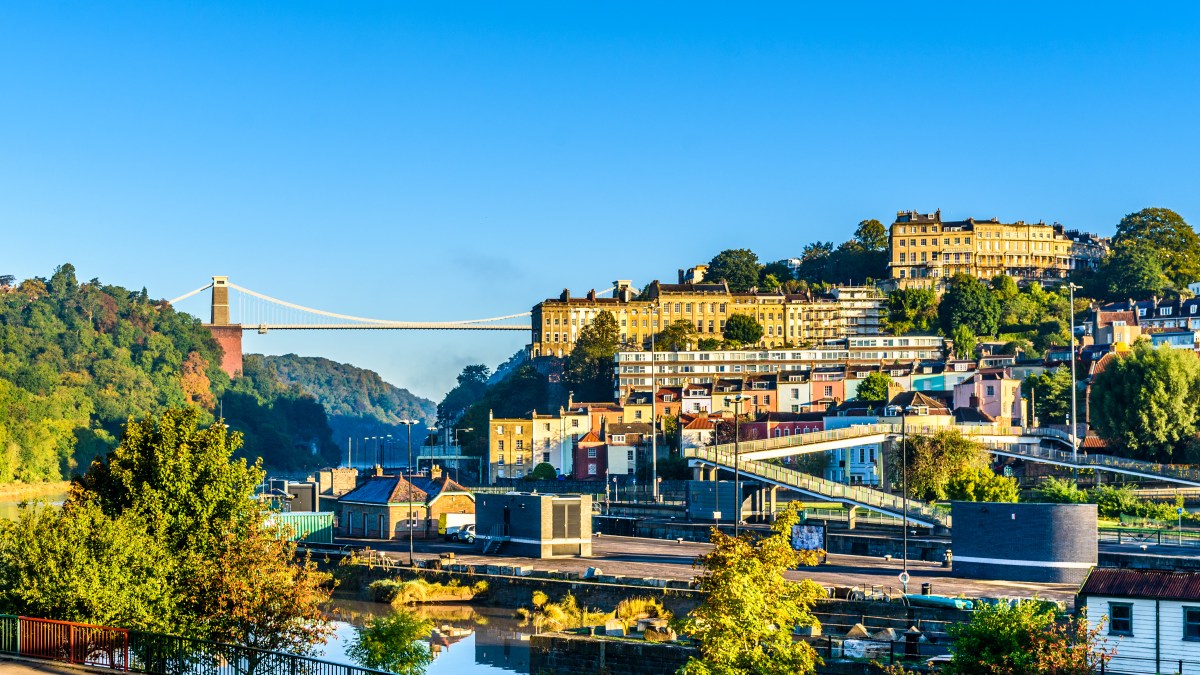Renting a property in Bristol, Bath, Brighton and Sevenoaks in Kent is now less affordable than in many areas of London, according to official new data.
Tenants in Bristol spent almost half (44.6 per cent) of their household income on rent in 2024, according to figures released this week by the Office for National Statistics (ONS).
In nearby Bath, tenants spent an average of 42.7 per cent of income on rent, while in Brighton and Hove it was 42.5 per cent, and a similar proportion in Sevenoaks (42 per cent).

Bath is only slightly more affordable than nearby Bristol for renting
GETTY IMAGES
• Read more expert advice on property, interiors and home improvement
The figures are well above the 30 per cent deemed “affordable” by the ONS but also higher than the London average of 41.6 per cent.
However, average rent prices in these cities and towns are still significantly lower than in London.
In Bristol the average monthly rent is £1,753 as of this month (this includes one bedroom, two bedroom and three-bedroom properties). This is much cheaper than in the capital, where the average monthly rent is £2,250.
Kensington and Chelsea is both the most expensive and least affordable local authority to rent in in England — the average monthly rent in the west London borough is £3,616, while a whopping 74.3 per cent of household income is spent on renting there.
Matthew Crayman, head of lettings in Bristol and Bath at the estate agent Hamptons, says Bristol, with its two main universities, is “a victim of its own success”.
“The city is attractive for lots of different reasons,” Crayman, who is based in Bristol, says. “We have lots of people coming from elsewhere in the UK and overseas to study in Bristol. Invariably you’ll see them stay. Students turn into young professionals, who will typically rent in central areas like Clifton, one of the most affluent areas. Once they get older, they’re looking at suburban areas.”
He adds: “I know that Bristol is classed as unaffordable now but we do have plenty of applicants who will pay that money to live in the city.”
• Homeowners get more space as renters feel the squeeze
Another reason rents have been rising in Bristol is because of a lack of housing stock. On one side, tenants stay put, renewing tenancies instead of moving. On the other, landlords have been selling up.
“Landlords are selling due to various market conditions such as tax increases and legislation changes. That has a massive impact and it is affecting the rent levels,” Crayman says.

In Brighton and Hove, tenants spend an average 42.5 per cent of their household income on renting
ALAMY
Rent and house prices both on the up
Rents across the UK went up by 7.4 per cent in the year to April to an average of £1,335 a month, according to separate ONS data published today.
Average monthly rents are now £1,390 (up 7.5 per cent) in England, £795 (up 8.7 per cent) in Wales, and £999 (up 5.1 per cent) in Scotland.
House prices across the UK went up by 3.7 per cent, with the average reaching £269,000.
“An uplift in house prices reflects a quiet but steady confidence in the market, as we continue to move further away from the turbulence of recent economic events,” says Nick Leeming, chairman of the estate agent Jackson-Stops.
“Encouragingly, the recent cut to the base rate to 4 per cent has brought fixed-rate mortgages comfortably below 5 per cent, restoring buyer affordability to levels not seen since 2022. This is a welcome development, especially as millions of homeowners approach the end of their fixed-rate deals this year and are considering what to do next.”
